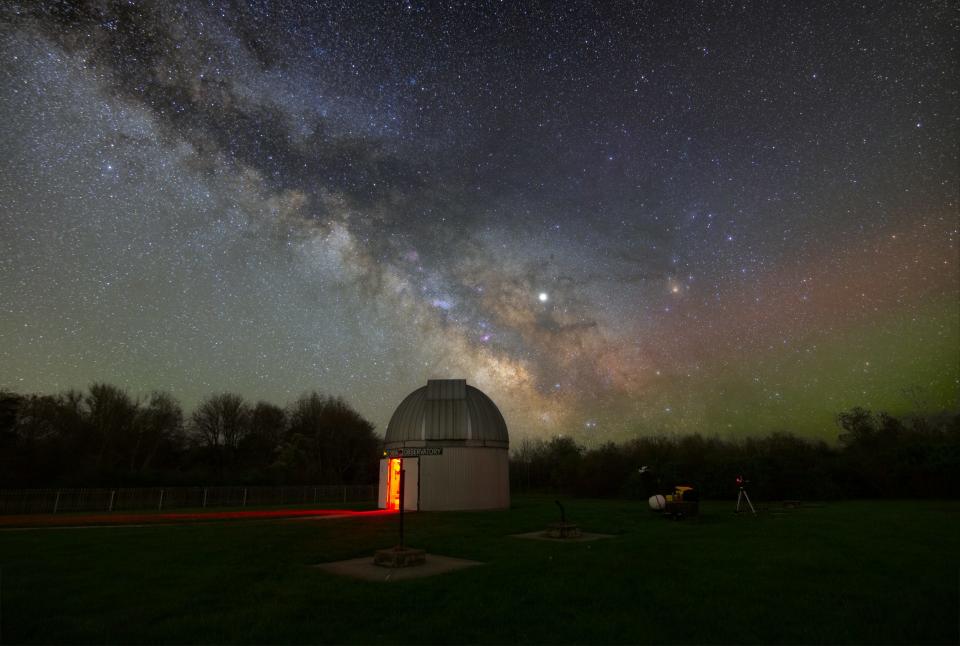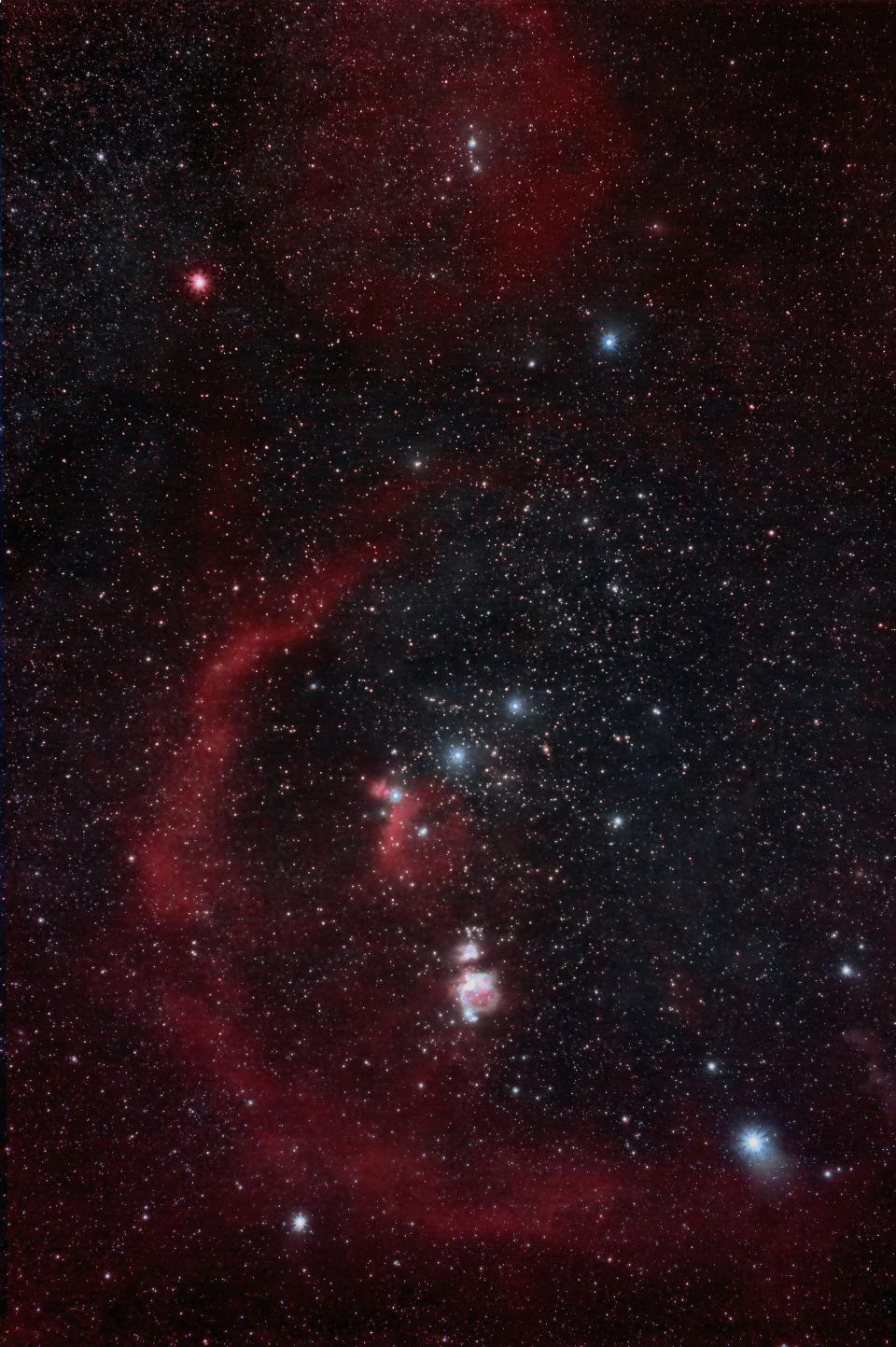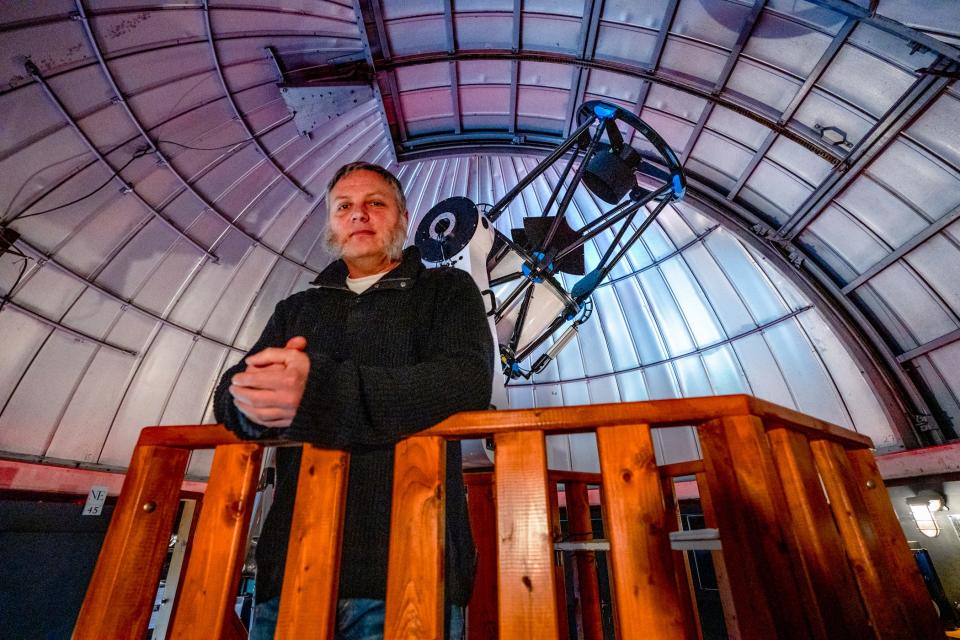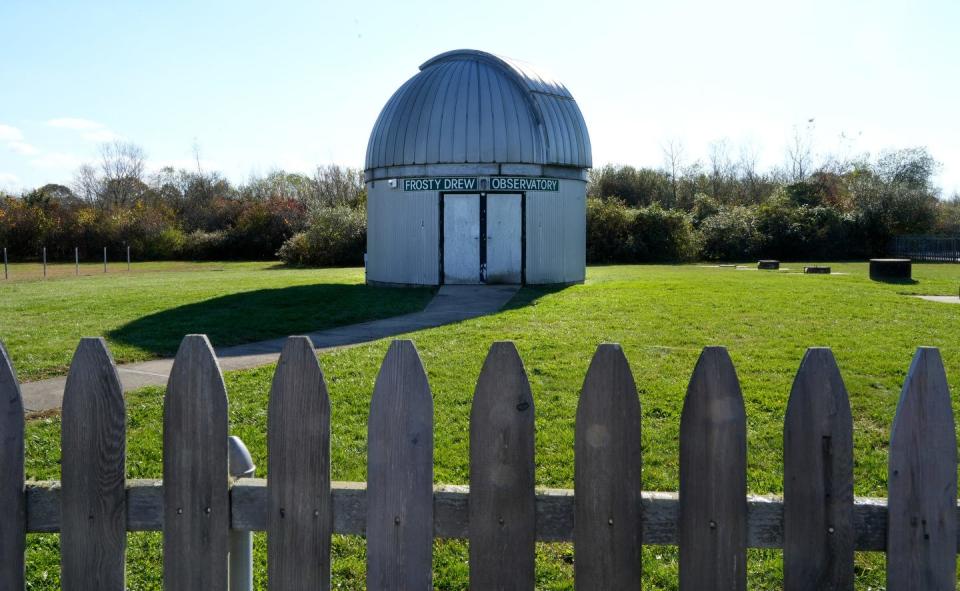A dark war is brewing between stargazers and soccer players in this coastal RI town. Here's why.
Can stargazers and soccer players share Charlestown's Ninigret Park after dark?
Yes, they can, says Deborah Carney, president of the Charlestown Town Council.
No, they can't, says Scott MacNeill, director of the Frosty Drew Observatory & Science Center, which is inside the park.
With the park's master plan undergoing an update, a potential option is increased lighting, particularly at the park's playing fields, which could provide area youth soccer and football programs more flexibility to squeeze in practices, according to Carney.
But MacNeill says lighting would ruin the park's unique view of the night sky, which every year attracts thousands of visitors from cities and towns, if not galaxies, far, far away.
"If lights are installed in Ninigret Park, Frosty Drew, Charlestown and the thousands of visitors that come to enjoy the night sky will lose the night," MacNeill says.
Carney says, "We can have lights in the park and co-exist with Frosty Drew."

What makes Ninigret Park special?
Far away from bright city lights, a stone skip from the ocean and adjacent to a wildlife refuge, Ninigret Park provides a near-perfect dark canvas to display the night sky, according to stargazers.
"Magical" and "breathtaking" is how MacNeill describes the view of the stars and planets. It's the best view in Southern New England and possibly the best place to explore the stars, planets and the Milky Way east of the Mississippi, MacNeill says.
The dark sky at Frosty Drew is a resource for everyone, MacNeill says. "We consider ourselves stewards of it."
Carney says, "We hear it about the dark sky, people who value the dark sky," but she notes the park is for the recreational use of all Charlestown residents. It has multiple playing fields, tennis courts, a disc golf course, a bicycle race course, hiking trails and a senior center. The park also hosts two major summer festivals, the Charlestown Seafood Festival and the Rhythm & Roots Festival.
"The park is for the people," she said. "The park is for all the residents of Charlestown."
Site was previously used to train pilots, including a future president, for World War II
Once the site of a naval training base (former President George H.W. Bush trained there before serving in the South Pacific during World War II), Ninigret Park consists of 227 acres now owned by the town.
The park is split into two parcels, with 55 acres owned and managed by the town. The remaining 172.4 acres, though owned by the town, are subject to restrictions by the U.S. Secretary of the Interior, according to master-planning documents.

The base was closed in the early 1970s and the land was transferred to the town in the early 1980s. Over the years, features have been added, but development has been haphazard, according to Carney.
She said the master-planning effort is an attempt to add organization to the 55 acres owned and managed directly by the town. A plan was developed in 2008 and is now undergoing a required update. The plan was updated in 2014, but that was never adopted by the Town Council, Carney said.
With old airfield roads still running through the park, some parts of it are dilapidated. The park itself "needs an update," Carney acknowledged.
"I'm looking to incorporate changes in terms of what currently exists," she said.
Planners are taking input from residents
As it crafts the master plan, civil engineering firm Vanasse Hangen Brustlin Inc., has hosted meetings with townspeople to gather input. Some issues discussed at a recent meeting included use of a basketball court, the potential addition of pickleball courts, whether the bike course could be moved, road safety and lighting.
MacNeill attended the meeting and weighed in on lighting. He writes a column for Frosty Drew's website and at least twice recently addressed the issue.
Among leadership in Charlestown, there appears to be a belief that a majority of Charlestown residents want Ninigret Park to be lighted, therefore removing Ninigret Park from the list of known dark-sky sites in the U.S.," MacNeill wrote in September.

Charlestown resident Brian Nieves also doesn't want lights in the park. He took up astrophotography several years ago. He does most of his photography on the Frosty Drew grounds but can also shoot the stars from his yard.
"At Frosty Drew, it's a bit darker, and I have a wider field of view," Nieves said.
Nieves has started the Facebook group Charlestown Dark Sky Advocates "to help bring awareness on the subject of both light pollution and the future of Ninigret Park."
"I see no reason to light up a field (in Ninigret Park) when you have fields all over town," Nieves said. "Frosty Drew is one of the darkest spots between New York City and Boston."
Are dark-sky compliant lights a solution?
But Carney says youth athletic programs such as the Chariho Youth Soccer Association and the Chariho Cowboys Football and Cheerleading program need more field availability. She says lighting could be installed and managed in a way that doesn't affect Frosty Drew.
"There really wouldn't be any impact, because the lights would be dark-sky compliant, and they would be put on a timer," she said.
Chariho Youth Soccer, which has some 450 players from Charlestown, Richmond and Hopkinton, practices on fields at Ninigret. Adding lights could provide the league more flexibility by extending available practice time, league president Dave Prescott said in an interview. It might also enable the league's competitive division to schedule night games, he said.

The association, however, hasn't taken a formal position on installing lights, he said.
MacNeill said dark-sky-compliant lights still send light into the sky, and even if the lights were shut off at 7 p.m., the observatory would lose prime viewing time during much of the year.
Any changes resulting from the planning process could be a long way off, Carney acknowledged. The consultant probably won't complete the plan until later in November, and then the council would have to vote on it. The town would have to approve any spending. At this stage, there's no estimate on the cost of lights.
MacNeill doesn't understand why, in his view, the town would risk what it has above Ninigret Park. The observatory is already popular and its events are usually sold out. MacNeill believes the town could build on that as a natural draw for tourists who would spend money at businesses in Charlestown.
"This is a destination. They call Ninigret Park the mecca, because it is the best place to go," MacNeill said. "We believe Charlestown could become the number one destination east of the Mississippi for dark-sky and Milky Way viewing."
This article originally appeared on The Providence Journal: Can RI's Frosty Drew Observatory co-exist with soccer and field lights?

